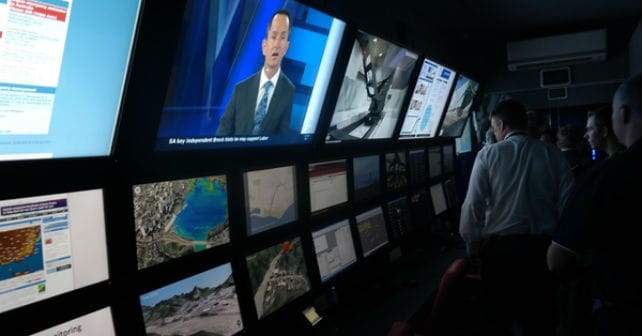Cutting-edge 'green' lasers within reach
 Compact “green” lasers could pave the way for digital projectors that could be small enough to be built into a laptop computer or even a mobile phone.
Compact “green” lasers could pave the way for digital projectors that could be small enough to be built into a laptop computer or even a mobile phone.
Researchers at a European consortium say such lasers are now within reach.
Because today’s digital projectors are so bulky, there is a growing commercial interest in using new laser technology to make them much smaller.
“Such devices would have extremely high market potential,” says Mircea Guina of Tampere University’s Optoelectronics Research Centre. “But so far the development has been technologically hindered by the ‘green gap’ — the lack of green laser diodes.”
While laser diodes are compact, mass producible and relatively cheap, standard manufacturing offers a restricted range of visible wavelengths that has proven to be technologically difficult to expand. Today’s laser diodes are also unsuitable where high brightness is required. Because digital projectors require powerful sources of red, green and blue light, compact projectors have not yet been practicable.
Guina was project manager of the EU-funded NATAL project, which set out to develop new laser technologies that would not only plug the green gap but also make possible a host of other applications that require high-brightness miniature lasers tuned to very specific wavelengths. Among the project’s highlights are high-power VECSELs (vertical external-cavity surface emitting lasers) that operate directly in red light and frequency doubled infrared VECSELs that can emit in the sought-after green gap, as well as in the amber-orange-red part of the spectrum. The red lasers can themselves be frequency doubled to emit ultraviolet light.
NATAL ended in August 2008 but the work is being carried on in several other projects. Some of these aim to develop VECSELs emitting at longer infrared wavelengths which could be used in distance sensing, environmental monitoring of gases and tissue-welding in surgery. Lasers emitting ultra-short optical pulses are also in development.
“NATAL has helped to generate a significant amount of knowledge and new technologies in this field,” Guina says. “Much of what we have done with VECSELs is now regarded as state of the art in the world.”




